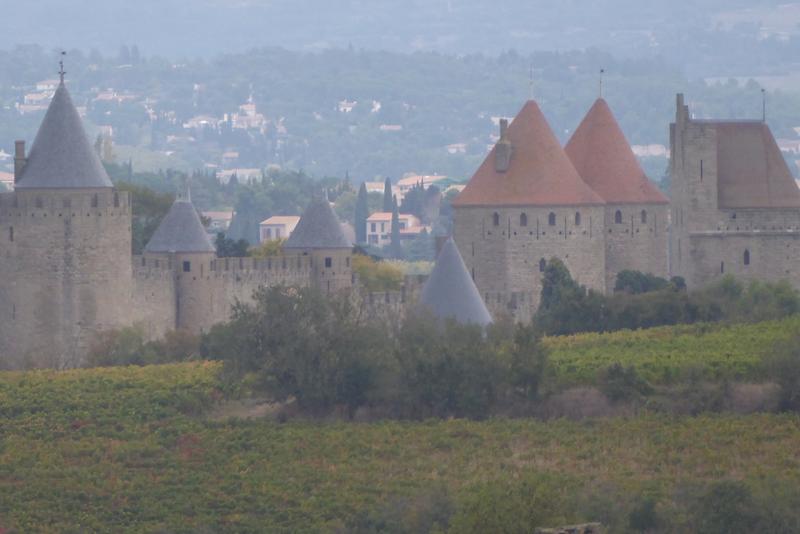Carcassonne in the morning mist#
It had some importance during Celtic times, became an important strategic fortification some 2100 year ago for the Romans, was ceded to Gothic king Theoderic II around 460, but was taken by Saracens from Barcelona in 725. Although King Pepin the Short drove the Saracens form this area only 35 years later and conquered most of the south of France he was unable to penetrate the fortifications of Caracassonne.
Carcassonne became famous in its role in the Albigensian Crusades, when the city was a stronghold of the Cathari. However, in 1209 the crusading army forced its citizens to surrender. Their leader, Raymond-Roger de Trencavel was imprisoned whilst negotiating his city's surrender, and died in mysterious circumstances three months later in his own dungeon.
The fortified city itself consists essentially of a concentric design of two outer walls with 53 towers. The walls consist of towers built over quite a long period. One of these towers housed the Catholic Inquisition in the 13th Century and is still known as "The Inquisition Tower".
In 1659, the Treaty of the Pyrenees settled the border between Spain (Catalonia) and France, and Carcassonne's military significance was reduced. Fortifications were abandoned, and the city became mainly an economic center. It was only after 1853 that the fortifications and the Basilica of Saint-Nazaire were again restored.
